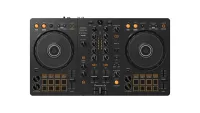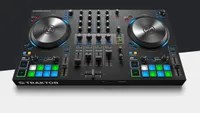MusicRadar Verdict
It's not the most advanced or cutting-edge controller on the market, but the MX2 features some smart design touches and a slick workflow.
Pros
- +
Smart layout with a good balance between functionality and ease-of-use.
- +
Under-unit lighting looks great and is genuinely useful.
- +
Good-sized jogwheels with CDJ and turntable modes.
- +
Impressive sound quality.
Cons
- -
Two-channels feels limiting now that stems and Pattern Player are part of the setup.
- -
Fairly pricey for an entry-level controller.
MusicRadar's got your back
What is it?
With the launch of Traktor Pro 4 late last year, Native Instruments added important features to its DJ software to bring it in line with its key competitors. That included creative tools like stem separation, but also important functionality like flexible beatgrids, a modernised UI and improved performance that meant it no longer felt like it was lagging behind its competitors.
It’s fair to say that Traktor Pro is no longer the market leader it once was, although that’s not necessarily a bad thing. Its biggest selling point in 2025 is that, unlike rivals Serato and Rekordbox, Traktor doesn’t offer a variety of subscription plans or add-ons. The Pro version retails for a single, reasonable price point, making it a particularly attractive option for hobbyist or infrequent DJs who want a comprehensively-equipped, user-friendly DJ app without being tied into a subscription plan.
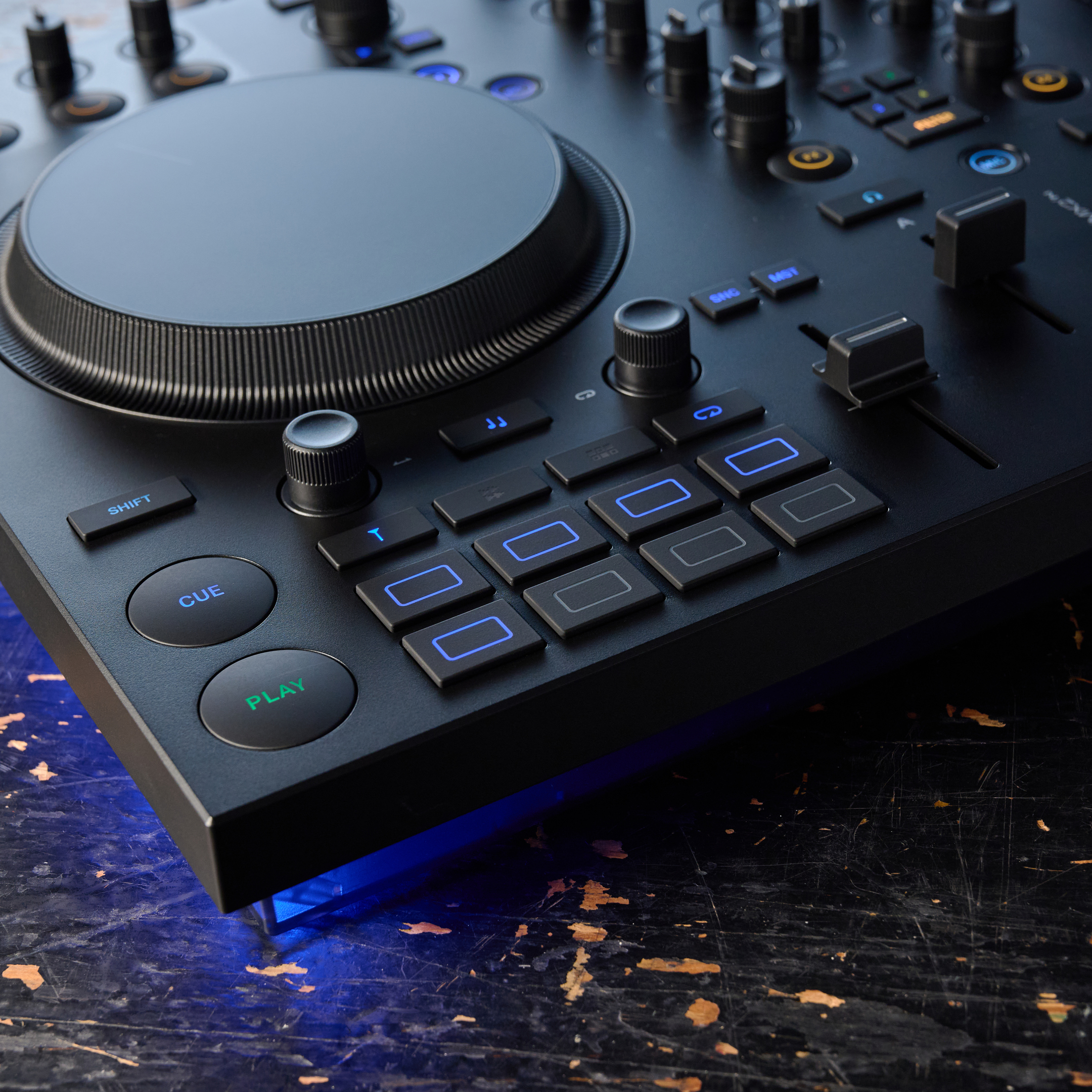

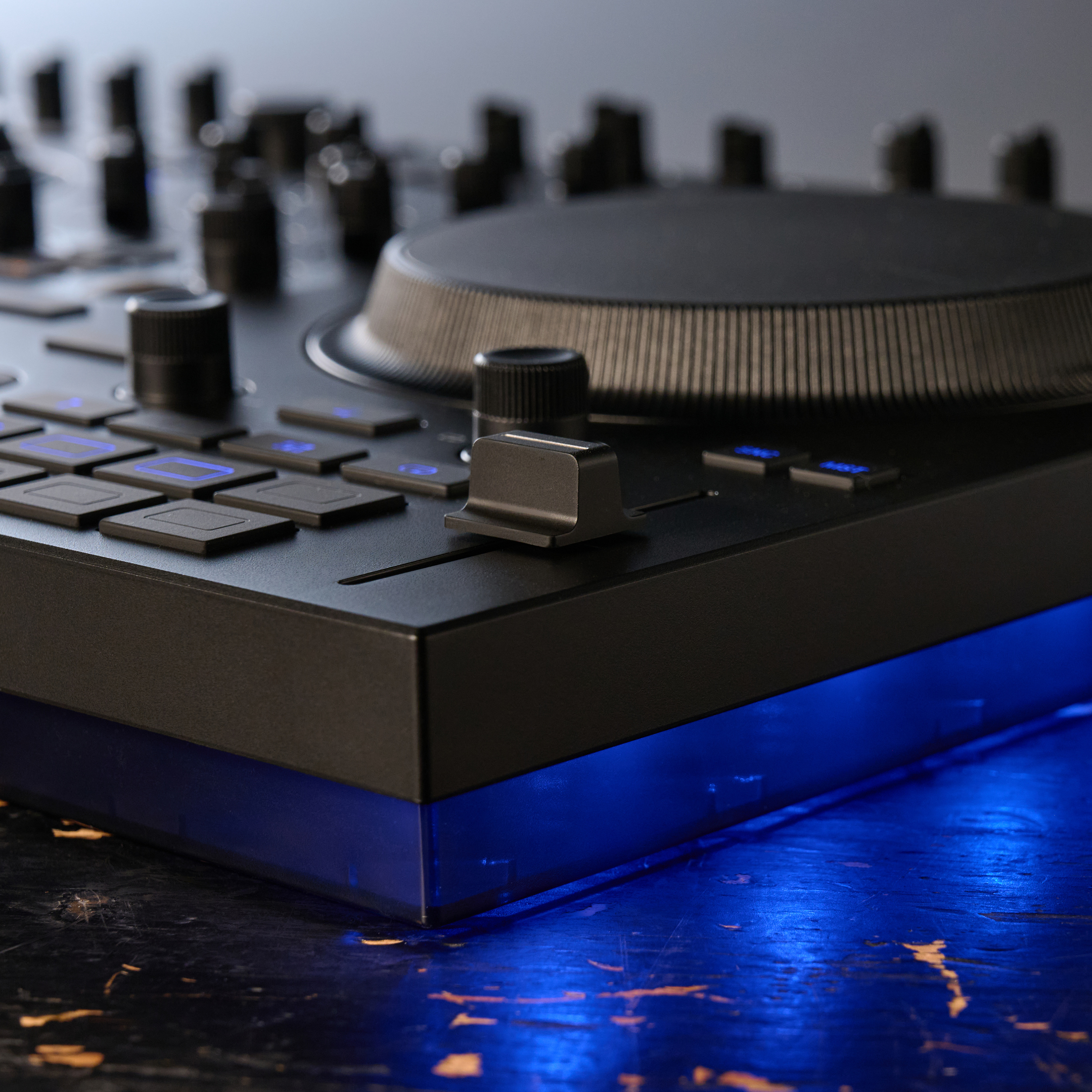
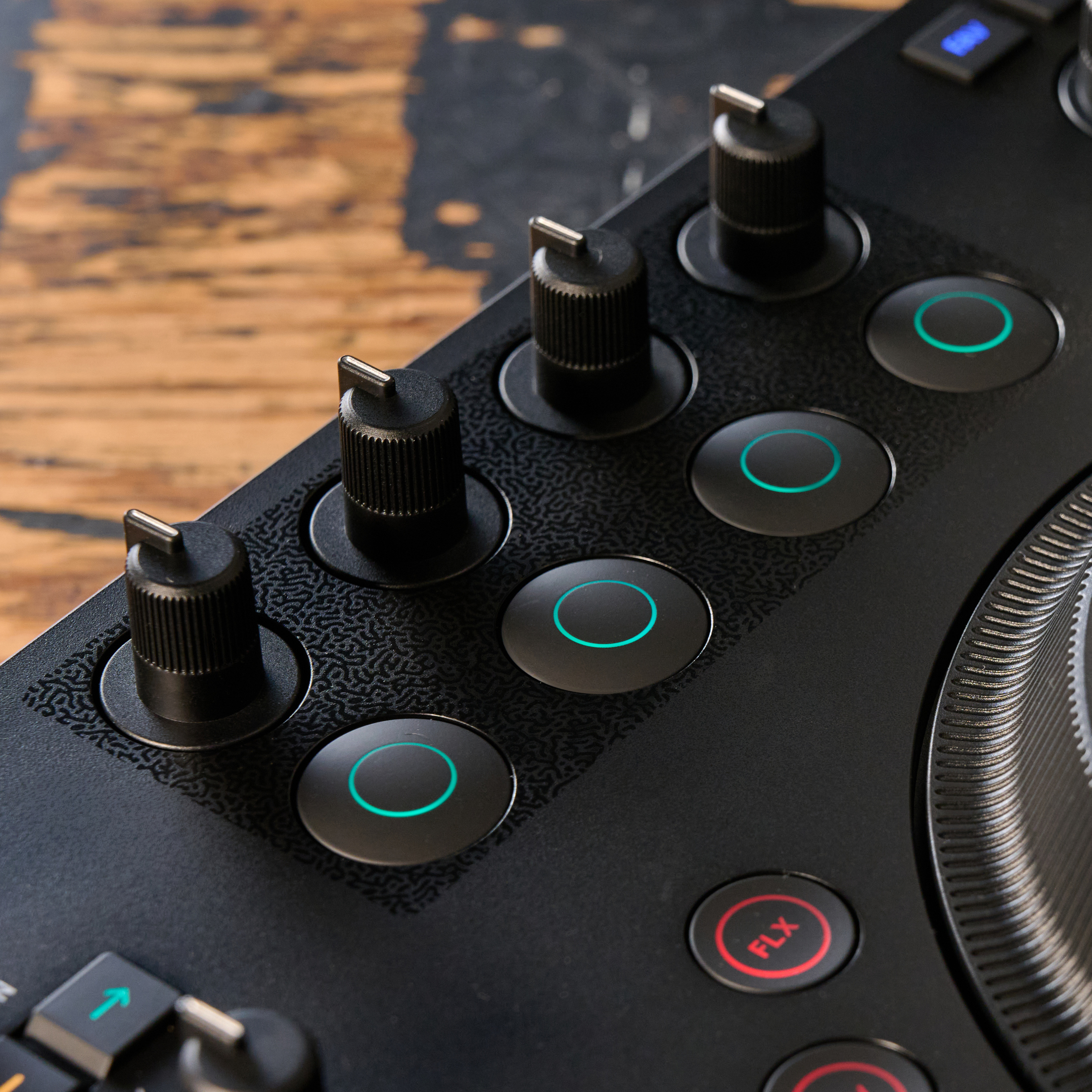
The MX2, NI’s first proper new mixing controller since 2019’s Traktor Kontrol S3, fits neatly into this narrative. Feature-wise, the MX2 is neither the most advanced or cutting-edge controller on the market, but it’s smartly designed and does an excellent job of offering plug-and-play control over the core capabilities of Traktor Pro 4.
Performance
The most obvious sticking point for those considering the MX2 is likely to be the fact that it is only 2-channel. I’d assume this is because a 4-channel MX4 model is likely on the horizon, but there’s no overlooking the fact that at £350 the MX2 is pricey for a 2-channel device (although the inclusion of the full version of Traktor Pro 4 softens this blow a little).
It’s a shame that the MX2 doesn’t have some kind of dual layer functionality in order to offer basic control of decks C and D. Although it’s primarily a 2-channel controller aimed at entry to intermediate-level DJs, with the addition of stem decks and the Pattern Player step sequencer, there’s more reasons than ever that a DJ at this level might want to try incorporating a third deck into a mix.
Given that – as we'll get to – the MX2 has surprising depth elsewhere, it feels like a more noticeable omission than on some rival entry-level controllers. If you can live with that main limitation though, everything else about the MX2 is impressive.
The hardware itself is lightweight and plasticky but doesn’t feel cheap in the way that some entry-level controllers do. The MX2 is a little bigger than the previous generation Traktor Kontrol S2, primarily in order to pack in an extra bank of controls that give hands-on access to the effects and Pattern Player. Despite the extra elements, the interface feels nicely spread out with decent sized buttons that don’t feel fiddly.
Want all the hottest music and gear news, reviews, deals, features and more, direct to your inbox? Sign up here.
The jogwheels are nicely sized and feel good for a controller at this price point. The MX2’s wheels can be used in two modes. The first is a CDJ-style mode where the whole wheel functions as one for nudging and scanning through tracks.
The second is a turntable-style mode, where the edges are used to nudge a track back-or-forth in time, while the top plate stops and holds playback, like holding your finger down on a vinyl record. As such, the MX2 feels surprisingly good for both old-fashioned beat matching and simple scratching.
The faders are probably the weakest element of the hardware design. They’re fine and do their job well enough, but don’t feel particularly robust. The pitch faders for each deck are fairly short too, making precise pitch adjustments a little fiddly.
The look of the MX2 hardware itself is smart. Without power on it’s all black to the point that it's difficult to differentiate between controls, but that all changes as soon as the unit is plugged in and connected to the software. Every control is brightly lit in a way that makes navigation clear without looking garish, and the colours are mostly customisable within Traktor’s preferences.
The LED lighting comes in handy in a variety of ways too. Each mixer channel has its own volume meter with peak indicator, which is useful for managing track levels.
I’m a particular fan of the implementation of backlighting, which uses coloured lights placed below each edge of the hardware to indicate what’s going on with each deck. This setup is customisable, but by default it uses green lighting to display when a deck is playing and red to show if a deck is out of sync or reaching the end of a track. Again, it looks smart and provides a genuinely useful visual cue.
The MX2 also sounds excellent for an entry-level controller. It acts as an interface for the Traktor Pro software, connecting to a computer via USB-C with RCA and stereo mini-jack outputs for connecting to speakers. The sound is loud and impressively clear. There’s also a rear panel mic input and both ¼ and ⅛ inch headphone ports on the front edge.

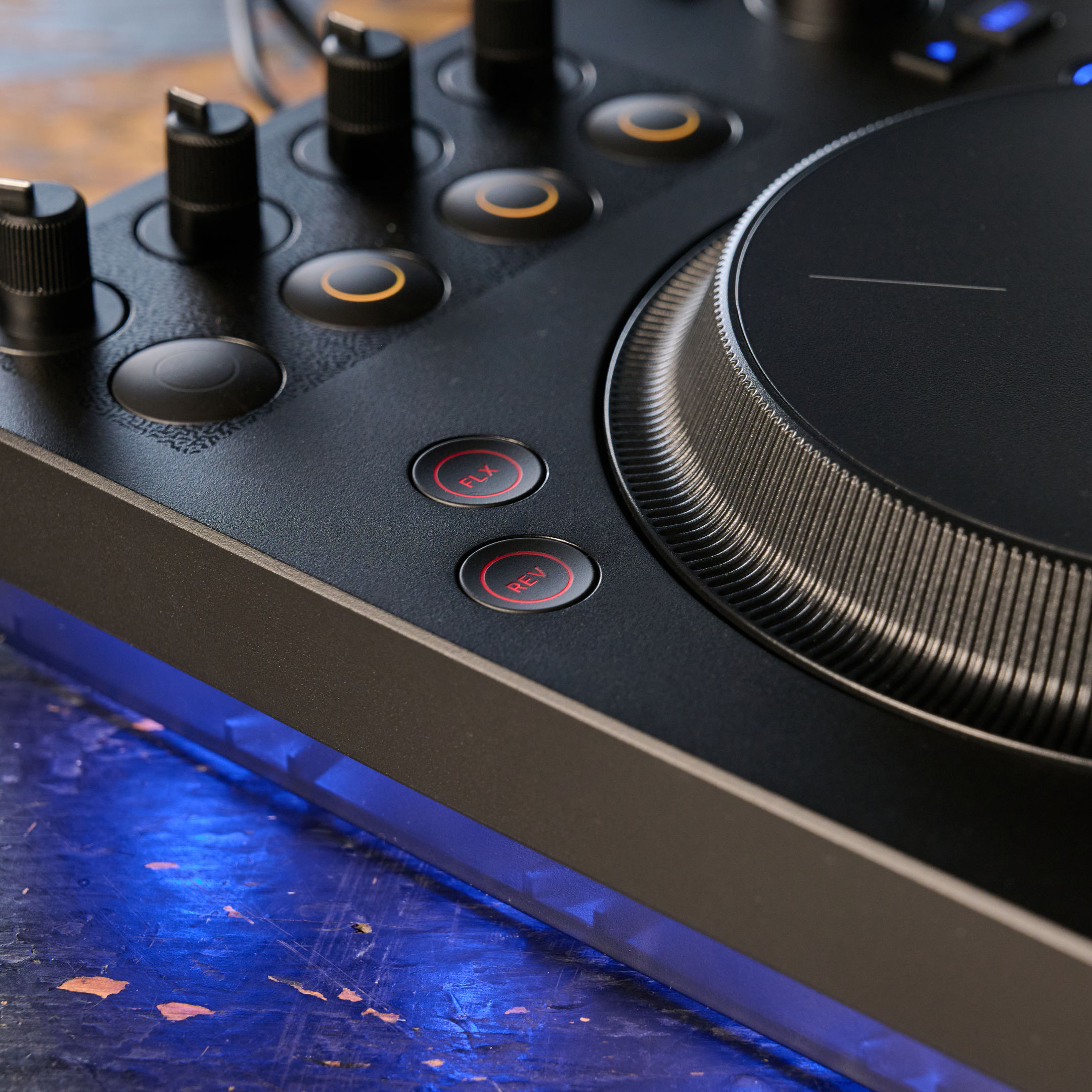

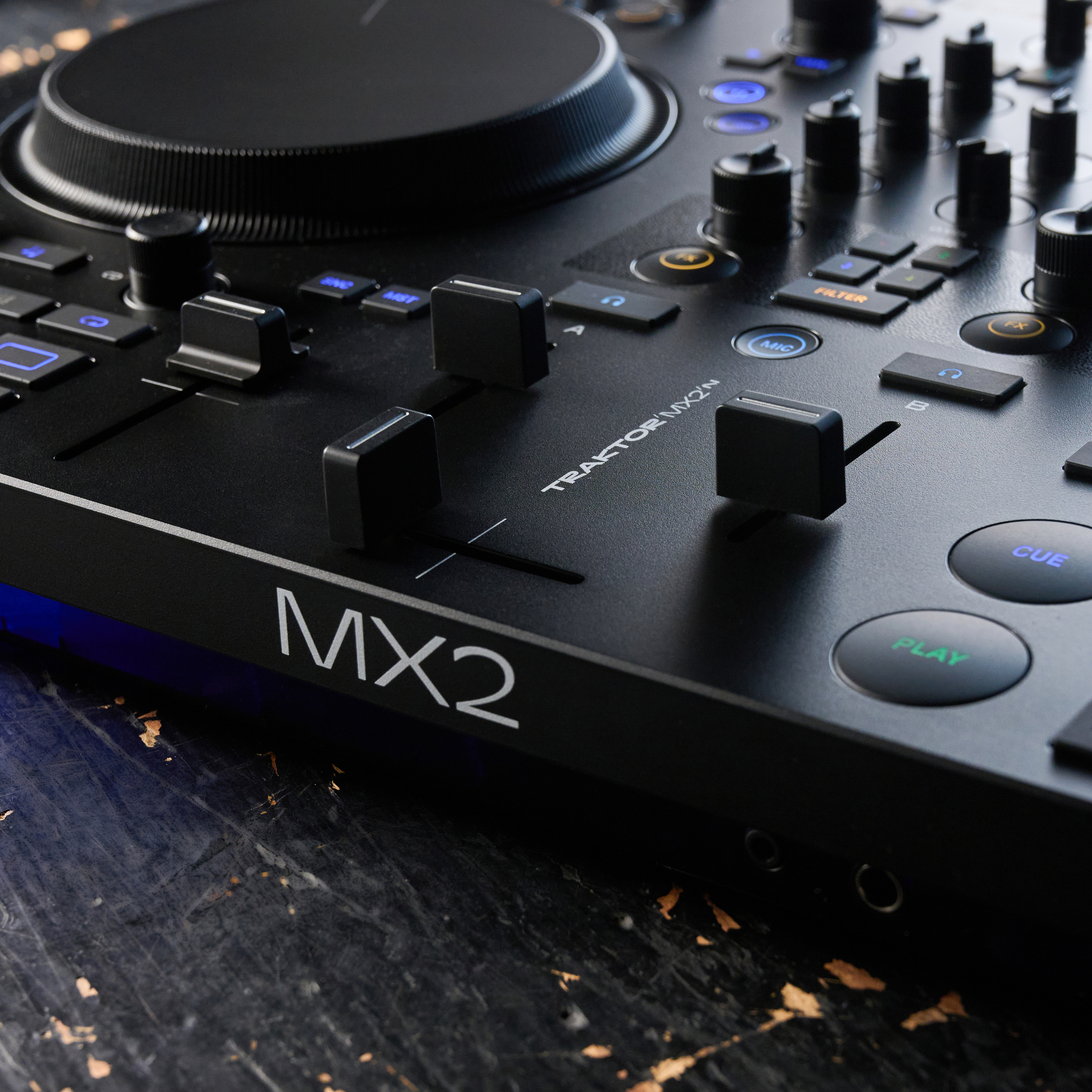
Despite being an entry-level device, the MX2 does a good job of incorporating Traktor’s more advanced features. The performance pads below each deck can be switched between cue point, flux looping and Pattern Player modes, the latter of which lets them act like a rudimentary drum machine.
The pads can also be used with Traktor’s stem functionality, allowing users to mute individual drum, bass, vocal and ‘other’ elements, as well as individually adjust levels and apply filtering.
I really like the way the MX2’s top panel controls interact with Traktor’s effect modules and Pattern Player, which can be assigned to the two channels interchangeably. The effects setup is simple, with a bank of buttons to turn effects on and off, and four rotaries to control levels and parameters, but it’s easy to use and thoroughly capable.
These can be used alongside the mixer’s central effects unit, filter and three-band EQ, all of which combine to bring a decent amount of depth to the device.
Verdict
Nothing about the MX2 feels like a massive leap forward – there’s certainly no flashy features like the ‘tactile’ jogwheels added to last gen’s Traktor Kontrol S4. However, in use you get the impression that this is a controller designed by someone with deep knowledge of the software and a sensible grasp of how DJs might interact with it.
Although the MX2 is entry-level in terms of its price point, the implementation of effects, Pattern Player and stem control mean that there’s a decent level of advanced functionality on offer too. In the same way that Traktor Pro’s single price point and user-friendly interface make it appealing for home use, I can see the MX2 appealing to more advanced DJs looking for a convenient and compact at-home controller to test out tracks and mess around with mix ideas.
On this latter point, the recent implementation of the new OneLibrary format into Traktor has the potential to make the software considerably more appealing on this front. The new cross-platform format will allow users to export tracks from their Traktor library, complete with beat grids, metadata and cue points, for use with AlphaTheta CDJs and players (although at the time of writing, the rollout has hit some speedbumps).
If you can live with just two channels, there’s a lot that impresses about the MX2. Personally, I look forward to trying the inevitable MX4.
Hands-on demos
Native Instruments
Alternatives
AlphaTheta's (confusingly named) 2-channel controller works with Rekordbox, Serato and also the newly-launched Traktor Play, which is an entry-level version of Traktor Pro 4.
Read the full DDJ-FLX4 review
If you want four channels of plug-and-play control for Traktor Pro 4 right now, then the last gen Kontrol S3 (2019) still does a decent job. It might be worth holding out for the inevitable MX4 to appear though.
Find out more Traktor Kontrol s3
Specifications
Price | £349/€399/$449 |
Hardware specs | 2 touch-sensitive high-resolution jog wheels 2-channel faders 2 VU meters 1 crossfader 2 pitch faders 58 backlit buttons, 16 RGB color-coded pads 6 encoders, 21 potentiometers Master Out (RCA, mini jack 1/8") Headphone Out: mini jack (1/8") and ¼" jack Mic In ¼" RGB backlit bottom shell External power supply connector USB-C |
Audio outputs | Channels: 2 Stereo DAC: Cirrus Logic High Performance DAC Sample Rates: 44.1, 48 kHz, 88.1, 96 kHz Bit Depth: 2 4 bit |
Dimensions | 323.1mm x 511.4mm x 61.9mm |
Weight | 2.73kg |
Contact |
I'm the Managing Editor of Music Technology at MusicRadar and former Editor-in-Chief of Future Music, Computer Music and Electronic Musician. I've been messing around with music tech in various forms for over two decades. I've also spent the last 10 years forgetting how to play guitar. Find me in the chillout room at raves complaining that it's past my bedtime.
You must confirm your public display name before commenting
Please logout and then login again, you will then be prompted to enter your display name.


